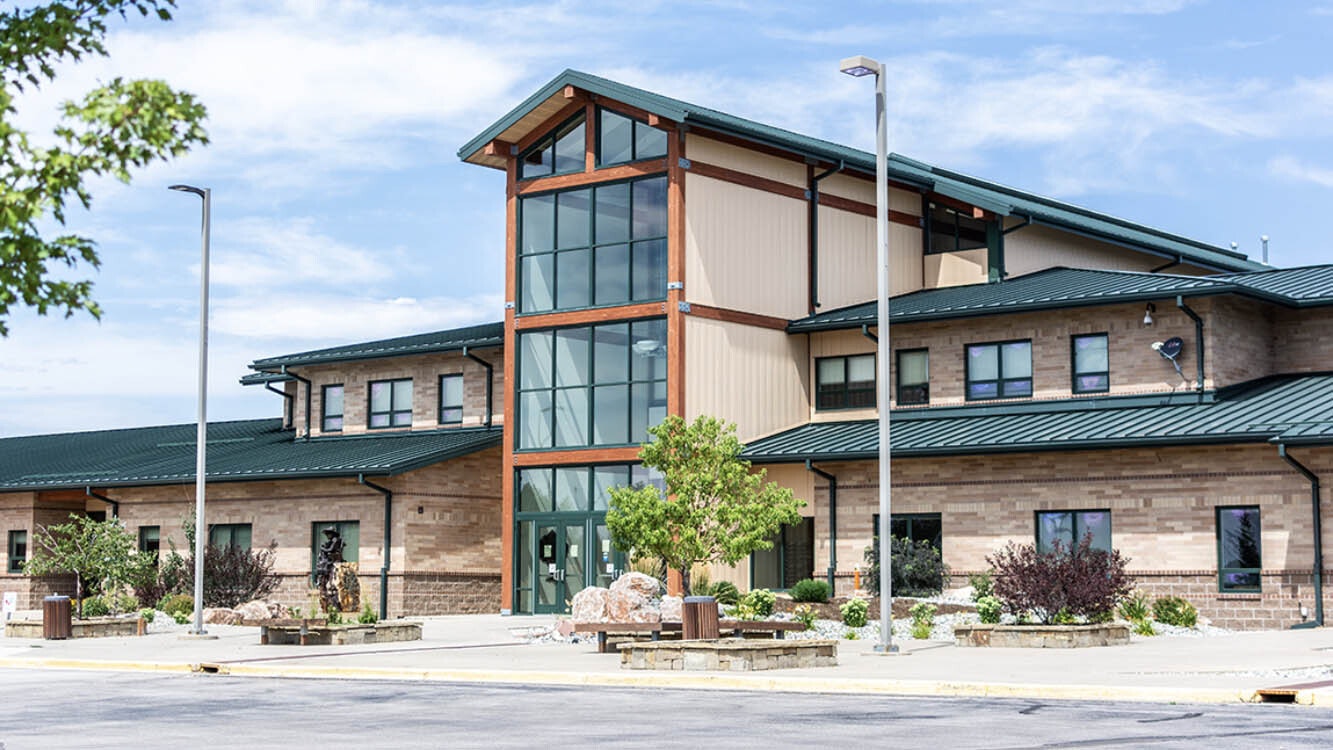By Ryan Lewallen, County 17
An amended bill allowing for the formation of a local community college district has passed three readings in the Senate, despite a Sheridan senator’s call for the measure to die on the floor.
Senate File (SF0083) now moves into the House where it will need to pass three readings before it advances to the desk of Wyoming Gov. Mark Gordon to be signed into law.
The bill passed the senate with 20 votes in favor of the measure and 10 against, but not before it was subject to amendment to address a potential funding shortfall for Sheridan College should Gillette College break away under its own district.
That shortfall could be as much as $3.5 million, according to a February letter sent to the legislature by Dr. Walter Tribley, NWCCD president, which included a request that the increase its funding to Sheridan College to cover it.
The bill now includes a provision enabling the Northern Wyoming Community College District (NWCCD) to collect state funding for both colleges until the new district is accredited by the Higher Learning Commission, which could take up to five years, according to Sen. Jeff Wasserburger (R-Gillette).
Another amendment to adjust the name of the new district failed to pass, meaning the name will remain the Gillette College Community College District for the time being.
The approved amendment, however, is the solution devised by Wasserburger and Sen. Bo Biteman (R-Ranchester) to address the funding issue raised by Sheridan College leadership.
That collaboration, however, is simply not enough to overcome hardships that could affect not only Sheridan College, but every community college in Wyoming should the measure pass the legislature, according to Sen. Dave Kinskey (R-Sheridan), who advocated against adding another college district March 2.
“I’m happy for the compromise,” Kinskey said. “But this bill still needs to die.”
The State of Wyoming cannot fund the seven community college districts it has now, he continued, the discussion should be about reducing the number of college districts to five instead of increasing them to eight.
Kinskey’s statement was based on a finding from a 2010 task force appointed by the State Senate to assess the viability of Wyoming’s community colleges.
The task force was charged with identifying a more streamlined and uniform approach to mill levies to realistically fund the state’s community colleges, according to Kinskey.
“That job has been hijacked by the discussion of the creation of an eighth district,” Kinskey said, adding his concern that allowing the formation of a college district that will fund itself, as opposed to paying into and receiving state funding, would be detrimental to the current community college system in Wyoming.
Kinskey voiced concerns that SF0083 would set the stage for further legislation that would remove the four-mill levy standard required by state statute for community college districts to receive state funding.
“If that changes, that really upends our funding system,” Kinskey said, further adding his belief that the issue surrounded Gillette College has resulted from the cancellation of college sports programs.
“Would we be here today if the (NWCCD Board of Trustees) had not eliminated sports?” Kinskey asked the Senate. “Is that a reason to create an eighth community college district because they’re mad sports were eliminated? I’m mad too, I’m mad over the economic situation of the State of Wyoming. But when you’re mad, you don’t do your best thinking.”
Wasserburger opposed Kinskey’s assertions that the bill would result in financial strain for Wyoming community colleges, referencing an independent study conducted after the Campbell County Board of Commissioners first sent the request for the formation of an independent college district in Gillette to the Legislature.
“What they said was- Gillette College would be a net positive for all community colleges in our state,” Wasserburger said. “That was their independent finding.”
The formation of the Gillette College District would save the Wyoming Community College Commission (WCCC) around $6.1 million, money that would be reallocated back into every community college in the state, according to Wasserburger.
That realization, Wasserburger continued, resulted in the WCCC, the one body that he could say for certain are the experts in all issues relating to higher education, passing the measure seven votes to zero.
The issue surrounding a new college district in Gillette has never been about sports, Wasserburger noted, but has always been about the division of power between Gillette College and Sheridan College.
Right now, Wasserburger said, the NWCCD Board of Trustees has seven members, all of whom are from Sheridan County. Gillette College’s only representation to the board is public attendees and the chair of the Gillette College Advisory Board.
That skew in power became readily apparent when, during the decision to cut sports programs at Gillette College, the NWCCD Board of Trustees declined to allow the college to fund its own sports programs with private funding totaling $525,000, according to Wasserburger.
“What College do you know of in America that doesn’t take a half a million dollars?” Wasserburger asked.
He said that it is the right of the people of Campbell County to govern decisions at their local college and to decide for themselves if they want to pay for an independent community college district.
“It is the one community college out there with the highest assessed valuation that is going to pay for itself,” Wasserburger said.
Currently, Campbell County’s assessed valuation for Fiscal Year 2021 is $4.24 billion, but that is expected to fall by millions of dollars next fiscal year with the decline in the coal industry. Should that assessed valuation fall even further in the coming years, that could mean the state will need to step in and fund the district, according to concerns voiced by Senate Vice President Larry Hicks (R-Baggs).
““I don’t know what the future is. But I know that it’s pretty grim financially and I know it’s tough on coal,” Hicks said. “We have these battles and we’re going to fight for Campbell County, but I don’t know if this is the right time right now to take this on.”
But that isn’t any reason to deny the people of Campbell County the right to form their own, locally funded college district, according to Sen. Charles Scott (R-Casper).
“Yes, the coal industry is in trouble. But (Campbell County) has tremendous oil and gas production as well,” Scott said. “They have a lot of resources there. They can, I think for the foreseeable future, support the college.”
He said that if the citizens of Campbell County want to compose their own college district and pay for it themselves, then it’s only fair the legislature allow them to do so.





